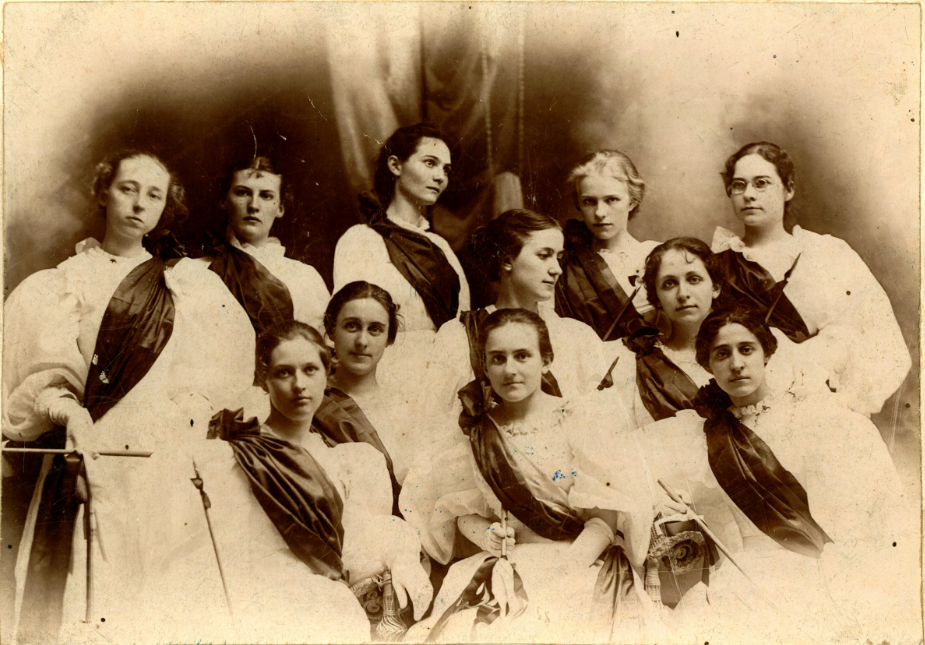Each spring, The University of North Carolina at Greensboro (UNCG) inducts a select group of students into the University Marshals, a campus service organization recognizing the academic excellence and the exemplary service record of 100 rising Sophomores, Juniors, and Seniors. Required to have completed thirty semester hours and have least a 3.65 GPA, the Marshals serve as ambassadors at graduation ceremonies and other important campus events.
Established in 1893, only a year after the opening of the State Normal and Industrial School (now UNCG), the Marshals were originally chosen by the college’s literary societies. These societies were primarily social organizations, open to the student body, which also held debates and dramatic presentations. An important part of campus life, the State Normal had two literary societies in these early years; the Adelphian and the Cornelian. State Normal’s first president, Charles Duncan McIver, decided that the Marshals would be selected from only the Junior class, and would be students who had shown academic excellence and good conduct. He requested that each society elect five members who best represented the college, with the Chief Marshal being chosen by one society, alternating between the two groups each year.
In 1910, a Student Council was created as an advisory group to the college administration. Nominated by the literary societies, the Council was comprised of three students from each class, except the senior class, which had four, including the Chief Marshal who was president of the Council. This group provided a means of communication between the college administration and the student body and was charged with improving college life. When the Dikean and Aletheian societies were added during the next several decades, elected members were divided between the four groups. In the late 1930s, it was decided that each society would elect five senior Marshals and three junior marshals to meet the needs of the increasing numbers at college functions.
From the organization’s beginnings, the members had a certain required dress. White dresses and long sashes were worn by the girls with white regalia and their class numbers or a background of their class colors, appearing by the 1920s. The satin class numerals, in the students’ class colors, contained special notes from her friends and family. The late 1930s classes determined that the regalia would be created and funded by each society, which would rent them to the Marshals.
The group underwent significant changes when the literary societies disbanded in 1953, and the selection process turned to a popular vote. The Chief Marshal was elected by the student body based on “scholarship, charm, and service,” and her thirty-two additional “assistants” were chosen from the incoming junior and senior classes. After the college became co-educational in 1963, male students were eligible to join the Marshals. The organization selected Juniors to serve a two-year term and the Chief Marshal was elected from the Senior class. By the 1980s, the group had become the “University Marshals,” who were chosen from among the Junior and Senior class for their academic excellence. The University Marshals are currently overseen by the Division of Student Affairs and remain one of the most prestigious groups on campus. They continue to serve as ambassadors for the university and role models for the student body.
By Kathelene McCarty Smith



One reply on “The University Marshals”
[…] We had four societies that we were automatically part of. I was a Dikean and I was a Dikean marshal. The societies elected the marshals…I sang with some choirs. We had music at Christmas […]